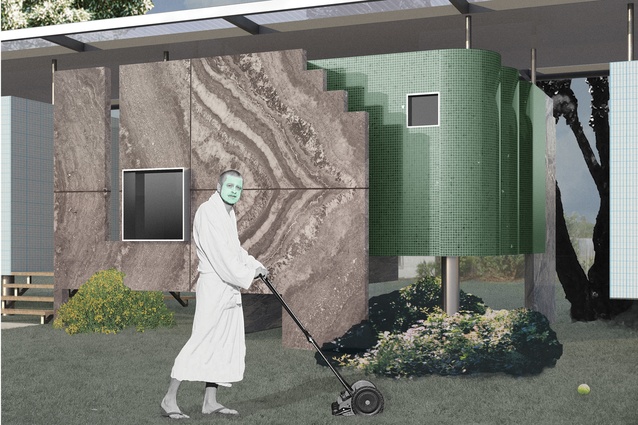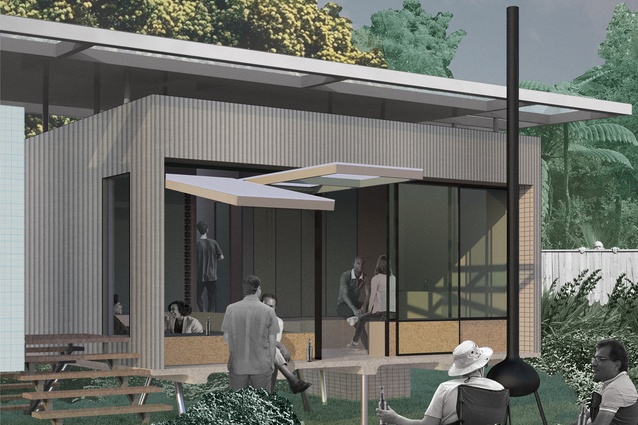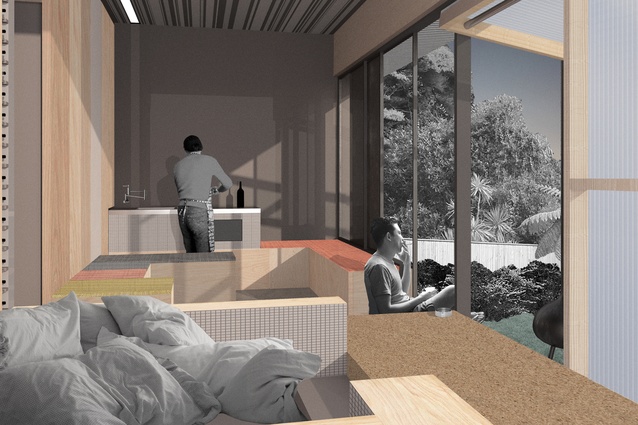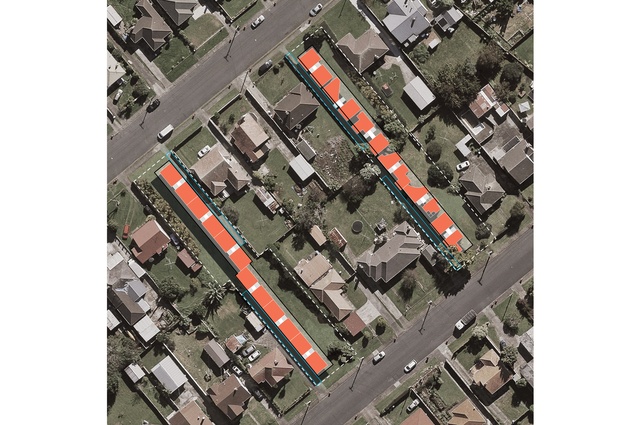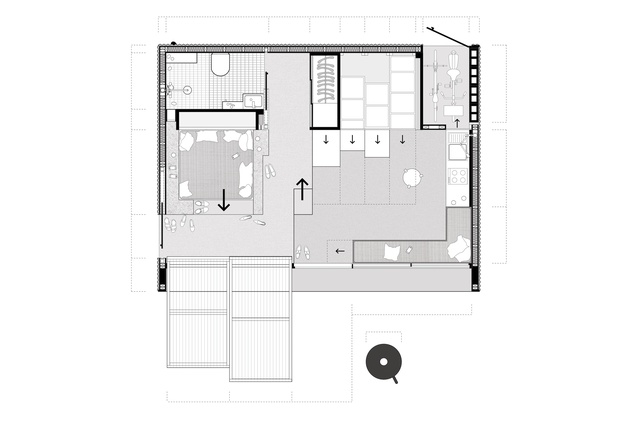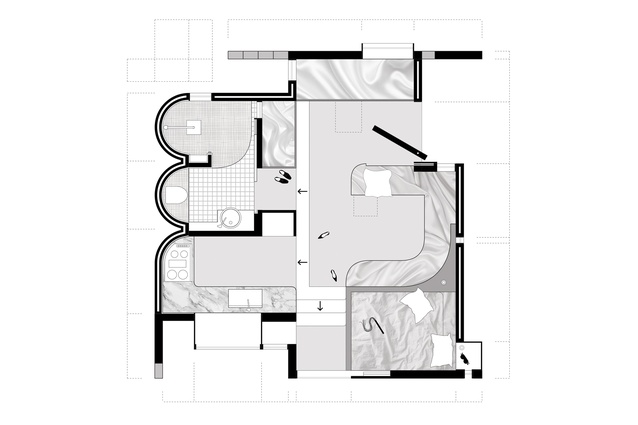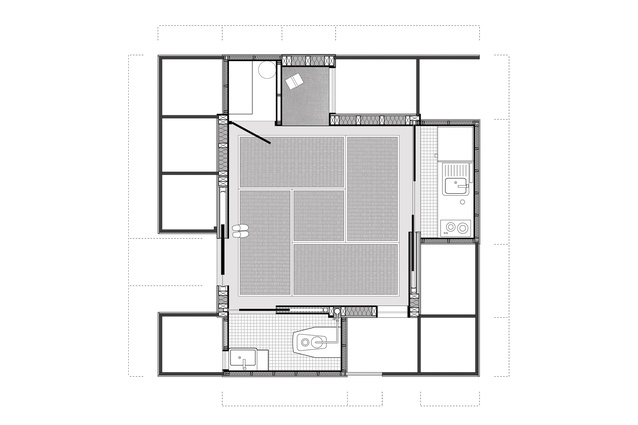Crit: Occupying the boundary
In the first of a series in which MArch students discuss their work, Jeremy Priest talks about what might happen on the suburban fence line to address the housing crisis. His project – Three – won the Supreme and the Student Postgraduate awards of the 2018 Auckland Architecture Association’s Visionary Architecture Awards.
“Crisis, what crisis?” was the title of a 12-week University of Auckland Advanced Design 2 studio course which provided the context for this project. Tutored by Tommy Honey, the paper prompted investigation into affordable and alternative modes of housing within Auckland’s sharing economy.
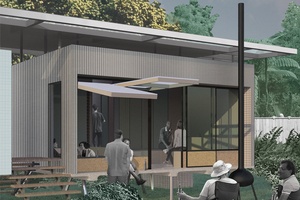
My response began with the reoccupation of suburban space both by dissolving the abstract and physical notion of the backyard fence, and by challenging how we protect and manage this often-under-utilised space. The architectural outcome inhabits the hypothetically fenceless suburban properties along redundant boundary lines with a contiguous network of dwellings, each no larger than 30m2. Raised on piles to provide ecological and visual permeation and connected by a solar energy and rainwater-collecting secondary roof, the system allows each occupant spatial autonomy.
Three profile studies scrutinise the parameters and potential of the network. The ‘sociable consumer’, ‘opulent ornamentalist’ and ‘reclusive minimalist’ exist within equal volumes of control – not as generic, repeatable models but as speculative individualistic reactions to space, desires and necessities. Each of the profile studies is hosted by a separate network across three sites in Grey Lynn, Onehunga and Otahuhu, to test how the idea performs within differing neighbourhood topographies.
Four ownership models were developed to provide a sense of financial realism to the proposal: the leasehold backyard, the freehold backyard, the collective-driven development, and the profit-driven development. Each ownership model has different benefits for both the new and the existing occupants on each site. This provides another layer of autonomy to the broader scheme and gives the consumer, the ornamentalist and the recluse greater context.
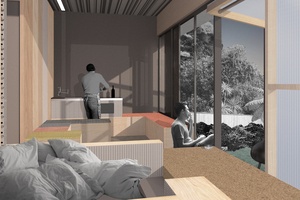
Within the Grey Lynn leasehold model, the sociable consumer transforms their habitat to support both living and entertaining within a restricted space, each spatial gesture performing multiple tasks. A band pushed to the rear accommodates retractable storage and amenities, with an entertaining space and sunken lounge, which converts into a bedroom. The façade unfolds outwards, welcoming in the peripheral environment, while the internal condition overflows towards an external fire. Pre-built timber components are assembled quickly and expand, fold, move and adapt to meet the inhabitants’ desires.
Within the Onehunga freehold model, the opulent ornamentalists are two meticulous, curated people. The dwelling is an object rather than a fillable void, that extends to the boundaries of its allotment, marking territory and giving space to lounging before utility. Curves and obstructions embrace performance by preventing all things being seen at once as the home is moved through.
Soft forms draped in velvet and silk welcome basking, embracing idle existence. Hard forms are carved in stone and marble rather than assembled, retained imperfections narrate the material’s history while mosaic images hug the structure’s curves, adding to the sculpted nature of the space.
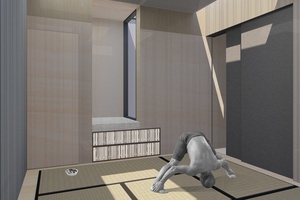
Within the Otahuhu collective model, the reclusive minimalist’s habitat resembles a cocoon. An outer layer of polycarbonate supported by thin steel members protects the internal volume, enabling the departure of the recluse from the outside world. Inside deep timber walls, the central form is free of objects, with all necessary items hidden in thinner, sheet-metal-clad auxiliary voids, coming flush with the polycarbonate. Blonde, untreated hardwoods line the interior of the central void, straw mats cover the floor and light punctures the space without granting direct visual connection outwards.
The three profile studies represent extremes working to create architectures that fulfil explicit needs, with divergent forms, material palettes and structural programming allowing each dwelling to inform uniquely how a small space may be constructed and occupied across diverse Auckland contexts.
Click here to learn more about Jeremy’s poject.
This article first appeared in Architecture New Zealand magazine.


